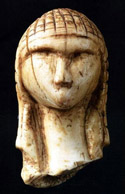Anthropology, Department of

Department of Anthropology: Faculty Publications
Document Type
Article
Date of this Version
2011
Citation
American Journal of Human Biology (2011) 23: 470-478. DOI: 10.1002/ajhb.21158.
Abstract
Objectives: To evaluate the relationship between facultative skin pigmentation, which predicts circulating levels of plasma 25-hydroxymitamin D, and several measures of bone mass and structure in a cross sectional sample of adolescent females living in Hawaii.
Methods: Our sample was composed of adolescent females (n = 94) living in Hawaii where seasonal sun exposure is minimal, and who self-identified as either white (n = 16) or Asian (n = 78). Bone mineral content (BMC) of the total body, the lumbar spine and the hip, and cross sectional area (CSA) and section modulus (Z) at the proximal femur were quantified using DXA. Facultative skin pigmentation was measured at the forehead and non-facultative skin pigmentation was measured at the inner arm using a Chroma Meter CR-200b colorimeter.
Results: There were no significant differences between ethnic groups in terms of skin pigmentation. The difference between a* taken at the forehead and inner upper arm significantly predicted BMC at the lumbar spine, total hip, and total body. Other measures of skin pigmentation were not significant predictors of any other measure of skeletal integrity.
Conclusions: The difference between facultative and non-facultative skin pigmentation for a* is a significant predictor BMC, but not bone structure. Our findings are limited by an inability to control for long term UVA and UVB exposure and lack of a measure of serum 25(OH)D status. Further research is needed to examine these questions, particularly in populations who live at high latitudes where a winter season limits vitamin D3 synthesis.
Included in
Biological and Physical Anthropology Commons, Dietetics and Clinical Nutrition Commons, Environmental Public Health Commons, Maternal and Child Health Commons


Comments
Copyright 2011, Wiley-Liss. Used by permission.